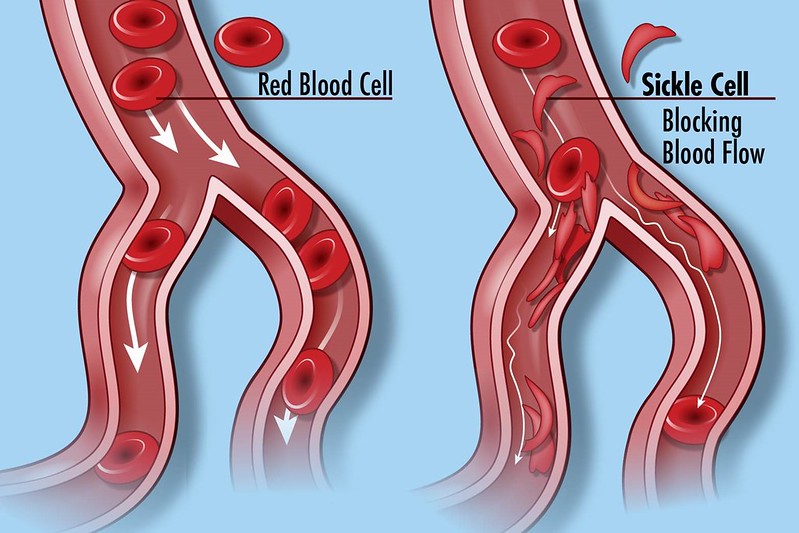By Del. Heather Bagnall
According to CDC projections, Sickle Cell Disease affects about 100,000 Americans, including 3,000 Marylanders, but has gone relatively unnoticed. In truth, we don’t know exactly how many people live with the disease or how many more may be carriers. Too many people are ignorant to the harsh realities of this disease or do not see it as a priority, some even believing inaccurately we’ve long cured Sickle Cell disease given its low profile in our public health landscape, but we have an opportunity to correct these injustices.
Earlier this year, the Maryland General Assembly unanimously passed bipartisan legislation to better inform the public, combat ignorance and misunderstanding of sickle cell disease, and assist patients. By requiring the Maryland Department of Health, in partnership with the Statewide Steering Committee on Sickle Cell Disease, to increase information sharing and education about the disease, programs, and services among patients, caregivers, health professionals, and educators, we took a small but important step, however, much more needs to be done at both a state and federal level.
Reduced life span
Sickle Cell patients have a reduced life span by 20 to 30 years, spending much of their lives managing severe pain crises that can last for weeks, or other complications like high risk of stroke and kidney disease. Sickle Cell sufferers have the highest rate of return to the hospital within 30 days of discharge, causing intense financial and emotional strain on patients and their families. Many are left facing a lifetime of disability, and there is no cure currently available.
Every patient suffering from a severe health condition should have access to the therapies and treatments they need, regardless of race, income, or location. Yet due to the demographics of the Sickle Cell patient population, they have not been given the attention and care they deserve. In Maryland, 97% of babies born with Sickle Cell Disease from 1995 to 2015 were African American. Nationally, 1 in 365 African American babies is born with the disease and 1 in 13 carry the trait, higher than any other ethnic group, with Latinos having the second most common incidence.
Systemic racial bias
Systemic racial biases inherent in our healthcare system add to the extensive list of challenges for patients. Although the disease was discovered 100 years ago, research is underfunded and until very recently has been bottom of the public health priority list. As a result, there are few Sickle Cell drugs available or providers knowledgeable enough to effectively treat, leaving patients with a deficit of options to manage this complex disease. Because Sickle Cell Disease is one of many “invisible illnesses,” patients are often wrongly labeled “drug seekers” when seeking care to manage extreme pain flare ups, by providers who do not understand the disease.
Finding work-sponsored healthcare is extremely challenging due to the severe health complications accompanying the disease. Nearly half of Sickle Cell patients rely on Medicaid for health insurance with many passing before reaching Medicare eligibility. As Medicaid coverage varies widely by state, patients face inconsistent, unequal coverage hinging largely on zip code. and because Medicaid programs lack sufficient data on Sickle Cell, most state programs cannot be sure how many people have the disease, let alone if their needs are being met.
Real hope for a cure
With new advancements in one-time, gene-based therapies, there is real hope for a cure for Sickle Cell Disease; bittersweet news to thousands of patients left wondering if they will have access to these new, curative treatments.
What can we do? We need a coordinated federal solution to make certain all patients can access every treatment available, and with our expanded focus on addressing racial disparities in healthcare we must re-energize the efforts not only to better understand and manage Sickle Cell Disease but to provide access to a cure as soon as it’s available.
In Maryland, working together with our federal partners, we can lead this effort to craft an action plan which will ensure the accessibility of Sickle Cell drugs and therapies. We must also further engage key stakeholders, like patients and providers, to advise on policy changes and best practices in making treatment widely available, creating a framework for our state and a model for our nation.
Every Marylander deserves accessible healthcare. It is time we remove the barriers to care that stand in the way of these patients. Let’s not wait another century to improve the lives of those suffering with Sickle Cell Disease. Let’s do the work now to remove any barriers to a disease-free life for our community.







Recent Comments